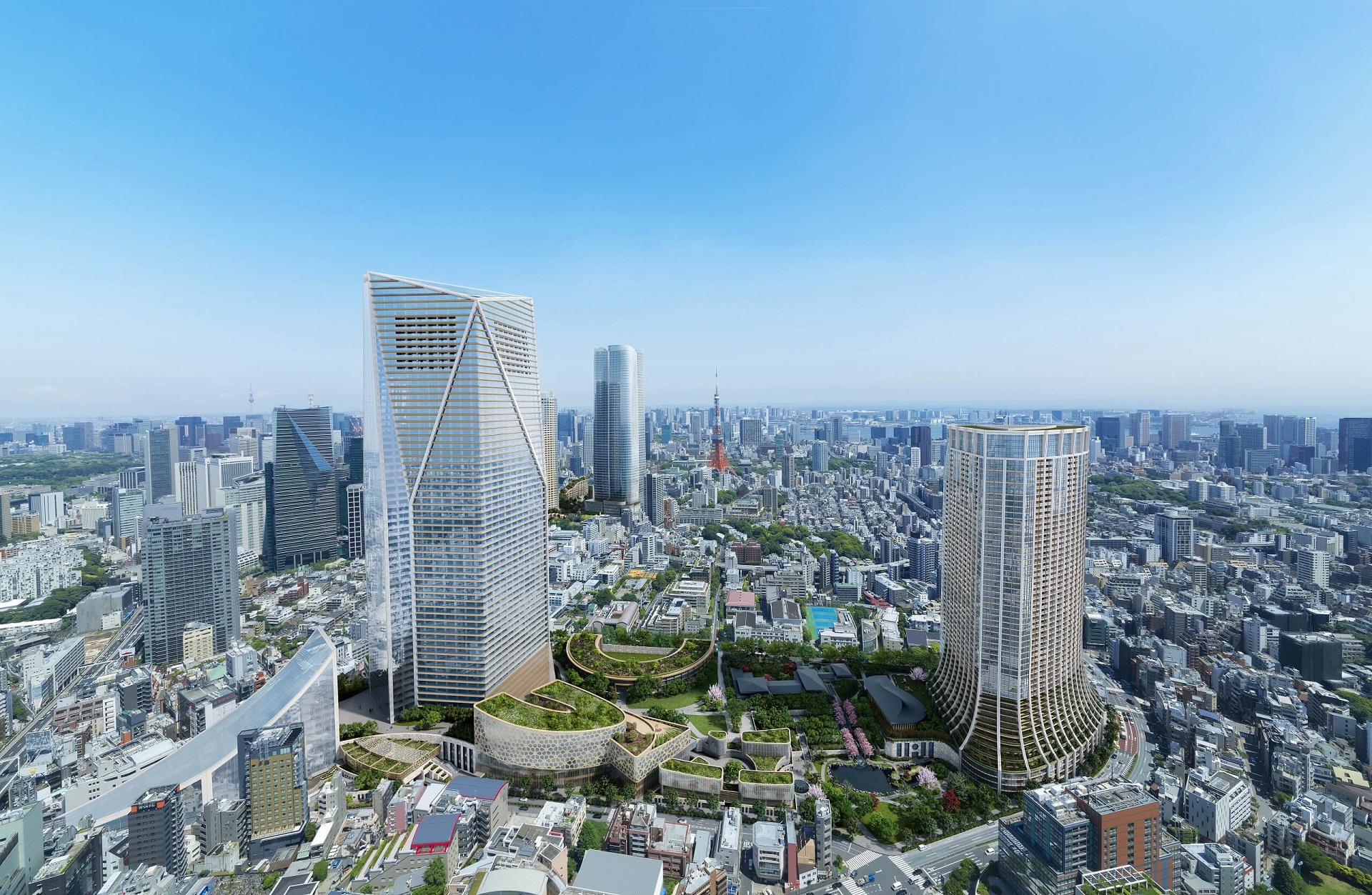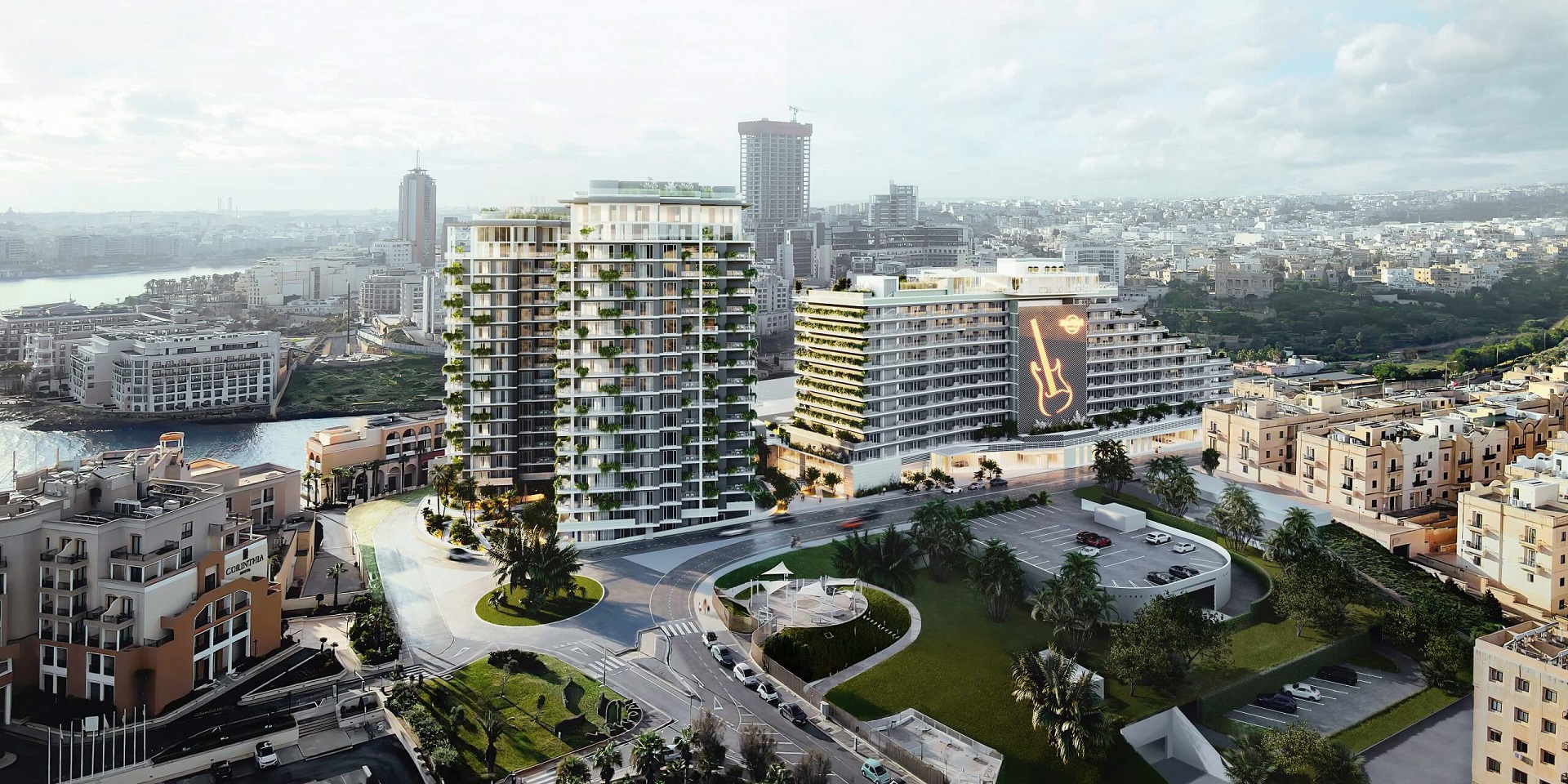Aerial view renderings, both static and animated, are widely used in architectural visualization. They are popular for being eye-catching, captivating, and informative. How do you create an aerial view rendering? Apart from a 3D model of the main structure, you’ll need a detailed large-scale backdrop to showcase its surroundings. There are two ways to create a background like that. You can either use drone photography or have a full 3D scene built from scratch. Each method has its unique advantages and limitations, influencing the visual impact of the resulting CGI.
Our 3D rendering studio excels at both techniques. So, in this guide, we describe the pros and cons of using backdrop photos and fully 3D scenes in the context of aerial visualizations. It will help you to choose the best method for your project’s needs, budget, and timeline. Let’s dive in!
#1. Drone-Captured Aerial Backgrounds

By showing the real-world environment, drone footage ensures accuracy and realism in an aerial view rendering. Not only does it provide a true-to-life view of the landscape, but also costs less than full-scale 3D modeling of the scene. Also, it is faster, especially if you’re lucky enough to catch the ideal weather and lighting conditions for drone shooting on the first try. However, there’s a catch. As your rendering will be based on footage of the existing environment, 3D artists won’t be able to significantly modify the backdrop.
Pros:
- Cost-effective compared to full 3D. This makes drone photography for aerial view rendering an affordable choice for projects with limited budgets.
- A high level of realism ensured by the depiction of real-life scenery.
- A quicker turnaround.
Ensure your exterior design project leaves a lasting impression and takes your clients’ breath away with stunning visuals.
Cons:
- Dependenсу on ever-changing weather and lighting. Favorable weather can speed up the 3D view creation, but waiting for the right conditions might cause delays.
- Limited control over details of the environment.
- Potential restrictions in camera angles and perspectives. For example, if you’re shooting in a neighborhood densely packed with buildings.
If you feel like this option is the right choice for your project, check out our article on how to make drone video for architectural 3D animation. There, you’ll find a comprehensive guide on shooting videos for stellar results.
#2. Full 3D Aerial Environments

Creating a full 3D environment for an aerial view rendering offers exceptional creative freedom and control. It allows you to experiment with different lighting, weather, and viewpoints, embodying scenarios that might be too difficult or impossible to shoot in real life – such as a fast change of seasons.
Pros:
- Unlimited possibilities for creativity and customization. If you need an aerial view rendering with a more artistic touch, full 3D is the way to go.
- No dependence on weather or natural lighting conditions.
- Ability to create aerial views and angles that drones cannot capture.
Cons:
- Higher costs due to the extensive work and resources needed to create realistic aerial renderings of this type.
- Longer production timelines. 3D artists need time both to build large detailed scenes and render them.
It’s worth mentioning that this method requires exceptionally high expertise in 3D modeling and rendering as well as access to state-of-the-art equipment. If you choose an inexperienced artist or a studio without a rendering farm, it might have a negative impact both on the timelines and the quality of the outcome. So make sure to pick a professional CGI contractor with the right toolset and skills.
Immerse clients into your projects with realistic 3D animations
All in all, both drone photography and full 3D scenes can work great for your aerial view rendering. The choice will depend on your budget, time constraints, and specific goals. If you are not restricted in resources, prefer a creative approach, and want to have total control over the results, building the entire scene in 3D might be the best option for you. And if you need to emphasize realism and get your rendering quicker, drone footage will be indispensable.
Looking for CGI services to enhance your architectural presentations? Contact us to get professional 3D artists working on your renders. Whether you opt for conceptual artistic rendering or prioritize high realism, our team will uplift your presentations and marketing materials!

Stacey Mur
Content Writer, Copywriter
Stacey is a content writer and a CG artist. Outside of work, Stacey enjoys musicals, Star Wars, and art talk. A proud Corgi parent.




Comments
Rutuja
Catherine Paul